
TRY SOME MINDFULNESS ART ACTIVITIES!
Here you will find some mindfulness art activities to try. Many will be about mindfulness painting. However, the activities are helpful for any creative exploit including scrap booking, photography, quilting or knitting. Mindfulness does not pick a singular form of creative expression. Anyone making anything is welcome to learn and try things here.
Within you, there is a stillness and a sanctuary to which you can retreat at any time and be yourself.
-Hermann Hesse
Create a Space to Be Mindful
Regardless of how you create, you can set up a space that facilitates mindfulness. Make deliberate choices to get in the “mindfulness zone,” inspire yourself, and design a space where you can embrace the present moment. This series of short videos will help you get started:
Studio Journey: Video 1 of 10
Studio Journey: Video 2 of 10
Studio Journey: Video 3 of 10
Studio Journey: Video 4 of 10
Studio Journey: Video 5 of 10
Studio Journey: Video 6 of 10
Studio Journey: Video 7 of 10
Studio Journey: Video 8 of 10
Studio Journey: Video 9 of 10
Studio Journey: Video 10 of 10
See Every Color All at Once!
Final Thoughts on Organizing Your Creative Space
Value Study
A simple but very helpful activity for any mindfulness artist is a color study. This activity has several parts. The first part involves a study using absolutely no color at all. Grab some white, gray and black color swatches. A trip to a hardware store’s painting section is a great place to find these. Play with what these different values look like inside and beside each other. See how to make white pop on black. At the same time, notice how the black can pop and the white can sink. Contrast can create holes and bring objects to the foreground. Play, notice and think about what you are doing and seeing. Be mindful of your discoveries and how you might use them as you are painting. Let your mind wander. Let your thoughts drift away and then return to your consciousness. Do all of this while you move the swatches to experience the possibilities.
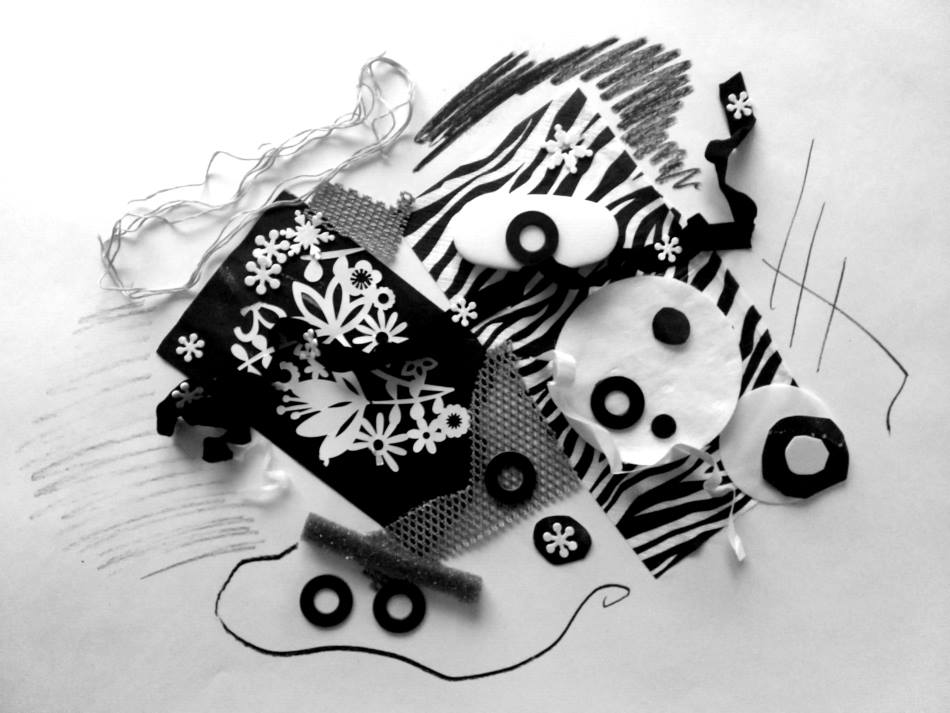
No Value Study
After completing the above “Value Study,” it’s time for the “No Value Study.” You have played with value using darks and lights: absolutely no color at all. Now, grab some color but choose ones that are similar shades. Make everything dark, light or in the middle. Again, a trip to a hardware store’s painting section is a great place to find color swatches. A trick to help determine whether you have chosen swatches with similar values is to squint. Simply lay the swatches down upon one another, and squint to see if any swatch pops out from the rest. Remove the popping swatches. Do the same with found objects, torn papers, and paint. Now, gather all your materials and move them around into a pleasing design. Do this all while noticing how variations in value and color cause objects to blend in, recede and pop. Be mindful of how a swatch of one color sits among a snip of another. Do you notice that most of what’s happening is doing so on a similar plane in space? Try not to create holes and try not to bring objects to the foreground. Let everything happen on the middle plane. Consider all you are doing and seeing. Wonder about how your discoveries might be used while you are painting. If your thoughts drift away, let them. If you become very aware of everything around you, embrace what’s happening in that moment. Do all of this while you play with color and space. Remember it’s all about the mindful experience, not the product.
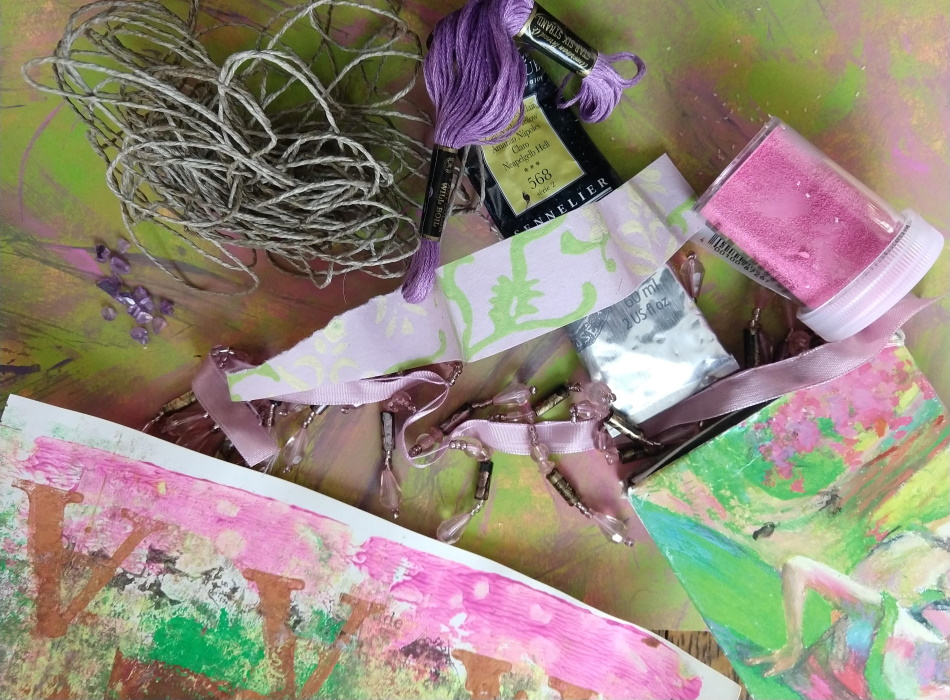
Color and Value Combo Study
After completing the above “Value Study” and the “No Value Study,” it’s time for the “Color and Value Combo Study.” You have played with value using darks and lights: absolutely no color at all. You have also played with colors of similar shades to make everything on your art making surface dark, light or in the middle. This was all done while noticing how variations in value and color cause objects to blend in, recede and pop. In this study, look for how variations in value and variations in color intensity play together to create depth in your creation. Create activity in the front, middle, and back of your art making surface. Yet again, a trip to a hardware store’s painting section is a great place to find color swatches to use in your Color and Value Combo Study. Also gather some paints, found objects, and torn papers. Use your materials to create a pleasing design. There are no right or wrong decisions here. You are just noticing how simple changes in your design influence where objects and colors sit in space. What blends in, recedes and pops? Consider what you would touch first if you could reach into your painting. Consider what you could touch in the center of it all. What would you have to reach in deep to touch? Embrace simple discoveries and tuck them away in your memory. Continue to use these discoveries moving forward as a mindful art maker. Be present as you lose track of time and get lost in the experience of making simple choices with value and color intensity. Have fun playing, creating, and learning. This is the power of mindfulness painting and art making.
Note: Intense colors are color rich and vibrant. Very little to no color mixing has been done to reduce the intensity of the original color. For example, add a touch of white to bright red and you just reduced the intensity: you have less strong color. You have also made the color lighter by adding white, so you have changed its value. Think about the difference between bright (intensity) and light/dark (value). Both these features of color interplay to create depth as we create.
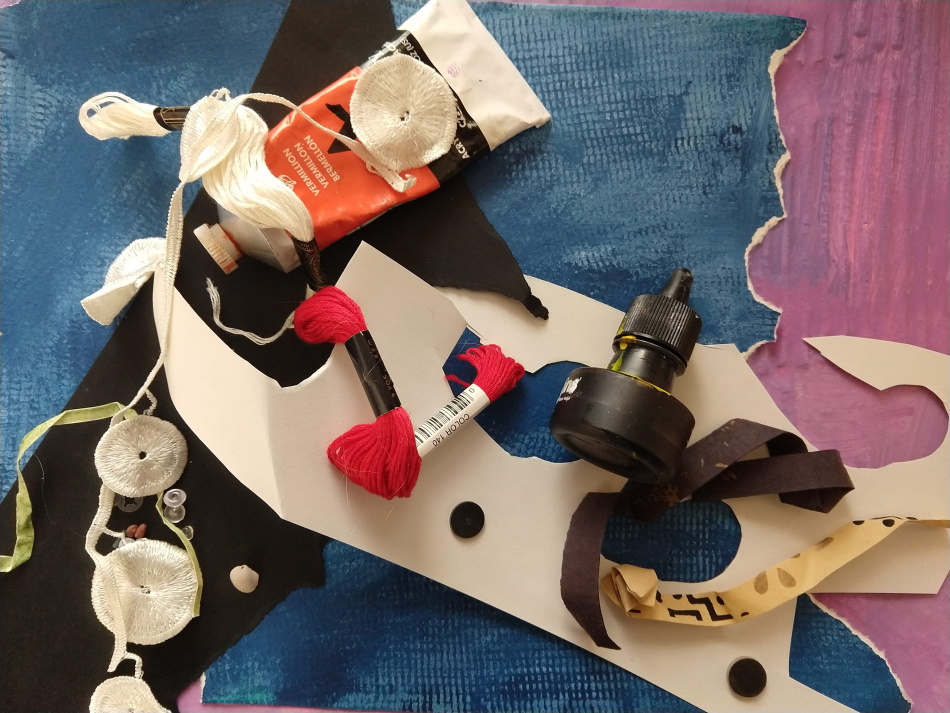
Art in Action!
Rock Study!
We have all been thinking a lot about social distancing. We dream of hand washing and we walk outside with anxiety about people getting closer than 6 feet of us. Every cough raises our

“Worry Meter”. Maybe we need something different to think about? This doesn’t need to mean that reality changes or that we pretend that we’re not concerned about the future. It can mean that we let our thoughts be what they are while engaging in a mindfulness activity. We can re-focus and let our thoughts go to someplace new- someplace that might bring us some peace and a little hope. This exercise is a simple mindfulness painting activity you can try.
An ordinary object can become a tool for mindfulness painting. You can use the tool to focus on color without distractions. Perhaps you are held back by the fear that you won’t produce a pleasing product? You might notice that you have concerns about subject matter. A simple tool can help you simplify the experience. The eraser on the end of a pencil is excellent for this. You just dip the end of the pencil into some paint and dab the color onto your canvas. This will make a dot of color. A jumbo pencil for preschoolers will have a slightly larger eraser. This will allow you to vary the size of your dot and allow you to place a smaller dot inside a larger one. An apple can be sliced in half and carved to create a stamp. Use it to make an even larger circle. Make a painting with just dots and circles of different pigments. Notice how the colors work together. Look for similar colors and notice how they work harmoniously. Consider how contrasting colors scream for attention and make themselves the focal point. Enjoy the way colors play together. Meditate on what you see. Note what you notice. Think about what it all means to you and how it makes you feel.
Something to Think About:
These rocks were painted by an art maker with limited experience creating mandala dot art. This is a great activity for anyone who wants to paint, regardless of their skill level. The process is very satisfying from beginning to end.
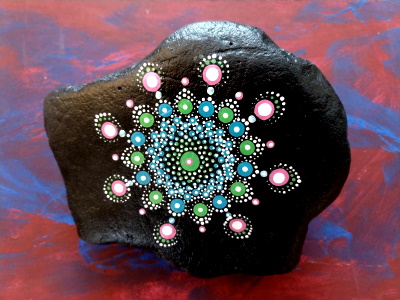
You might want to purchase a “Mandala Dotting Kit” instead of using pencil eraser heads to give yourself a greater variety of dot sizes. Use acrylic paint and allow previous dots to dry before adding the next layer to reduce smearing. Sketch your pattern on your rock before you begin applying dots if that makes you feel more comfortable. Finally, mandala stencils are great for those who don’t want to worry about creating their own sketch on their rock. All of these tips can help you stay focused on the pleasure of the painting experience.
from beginning to end. You might want to purchase a “Mandala Dotting Kit” instead of using pencil eraser heads to give yourself a greater variety of dot sizes. Use acrylic paint and allow previous dots to dry before adding the next layer to reduce smearing. Sketch your pattern on your rock before you begin applying dots if that makes you feel more comfortable. Finally, mandala stencils are great for those who don’t want to worry about creating their own sketch on their rock. All of these tips can help you stay focused on the pleasure of the painting experience.
Watch what happens to the colors as you layer them. Notice what color combinations please you the most. Meditate in this place of simple choices.
Enjoy the way colors play together. Meditate on what you see. Note what you notice. Think about what it all means to you and how it makes you feel.
While you are creating you might notice that you are thinking about something else other than what concerned you before you started making your first mark. Did a color choice let you forget about what’s happening on the news? Did thoughts about a pattern you might prefer then allow a worry to be less powerful? Consider the gift that creative process can offer you during challenging times. Art can be an escape when you need it. It can be peace and it can be hope. Consider making something and see where it takes you. You just might find that your mind takes you someplace better, and your day just might be made new.
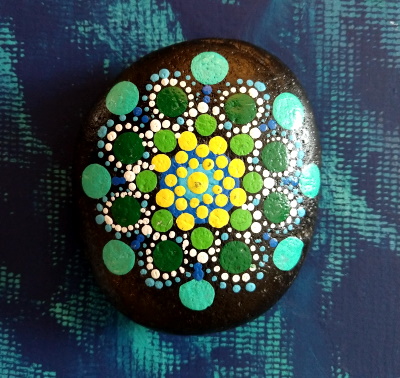
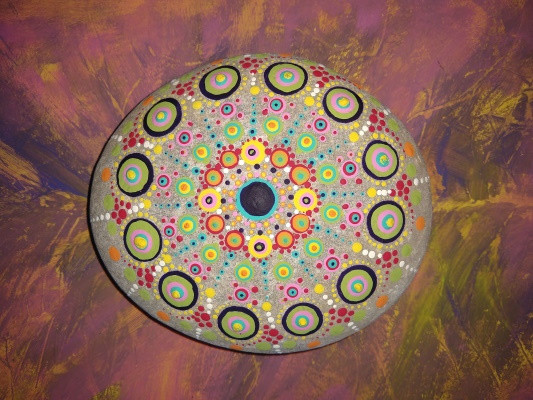
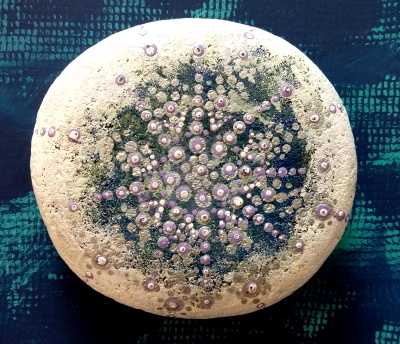
Geli Plate Arts
Gel printing plates offer us a great way to enter and enjoy the present moment. You get to make choices and you get to create something that satisfies you when you use this simple printmaking tool. I attended a gelli plate workshop. People of many different art making skill levels attended. The gelli plate was the great equalizer. It didn’t matter whether you could draw or paint. It didn’t matter if you were a long-time art maker or if you were brand new at exploring your creative side. Each person made something beautiful with their gelli plate and it was uniquely them.
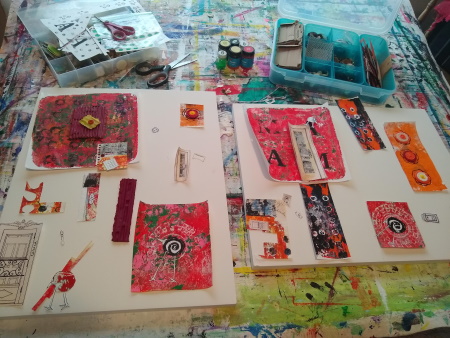
The simple shapes, colors and designs made with this print making tool allow the art maker to express themselves without fear of failing. This creates an opportunity for the creator to relax and be in a peaceful flow. One can be mindful of their choices and enjoy the present moment.
Gelli plates are liberating for creative types that are intimidated by what others will think about what they make. Such negative thinking interferes with the true gift of creating- enjoying the process, being aware, and noticing what is happening right now. There is truly no right or wrong when you use this simple printmaking tool. The gelli plate is a mindfulness painting tool that lets us pay attention to the beauty in our own choices and the beauty in how we express ourselves.
Try These Resources to Learn About Using a Gelli Plate: